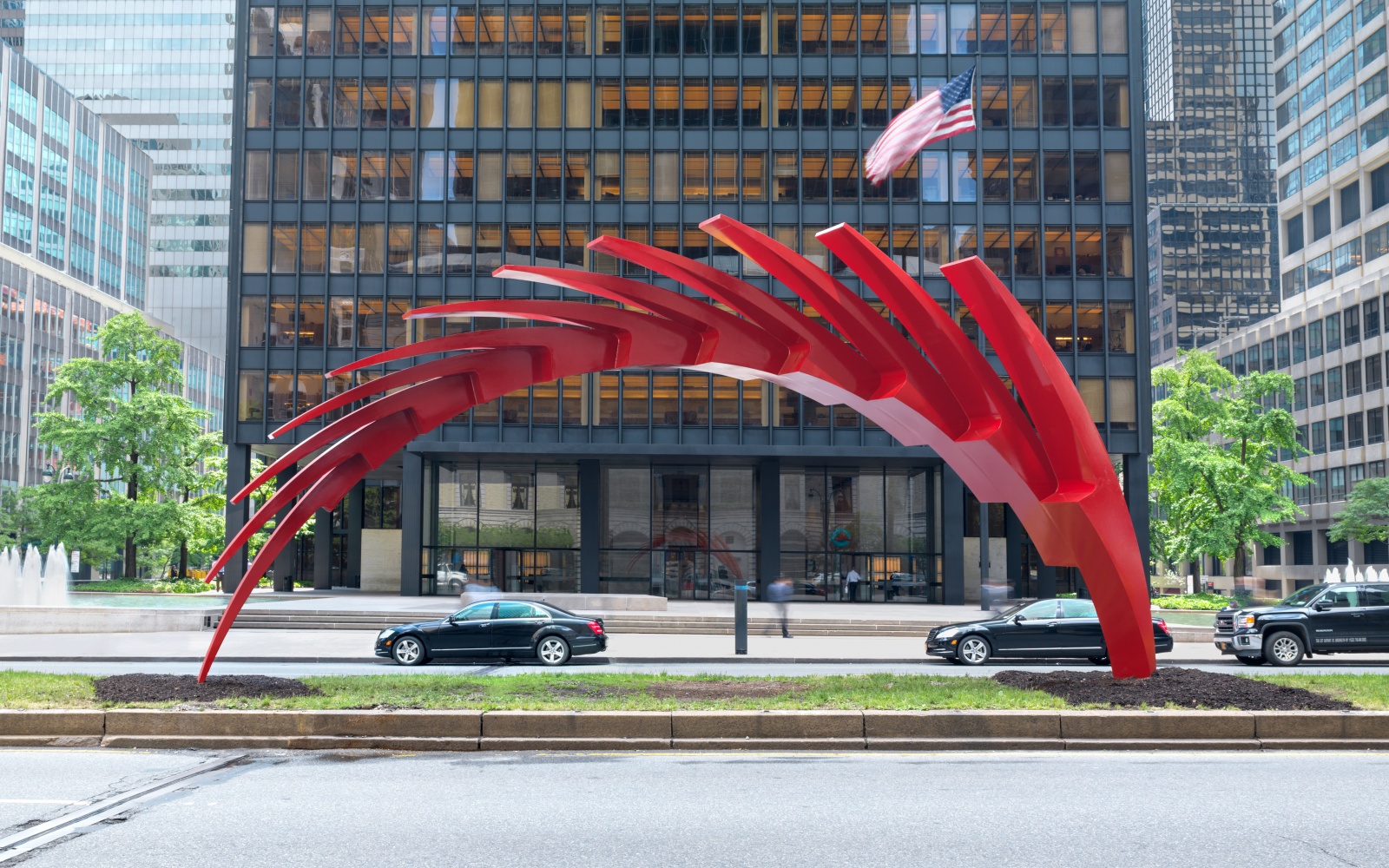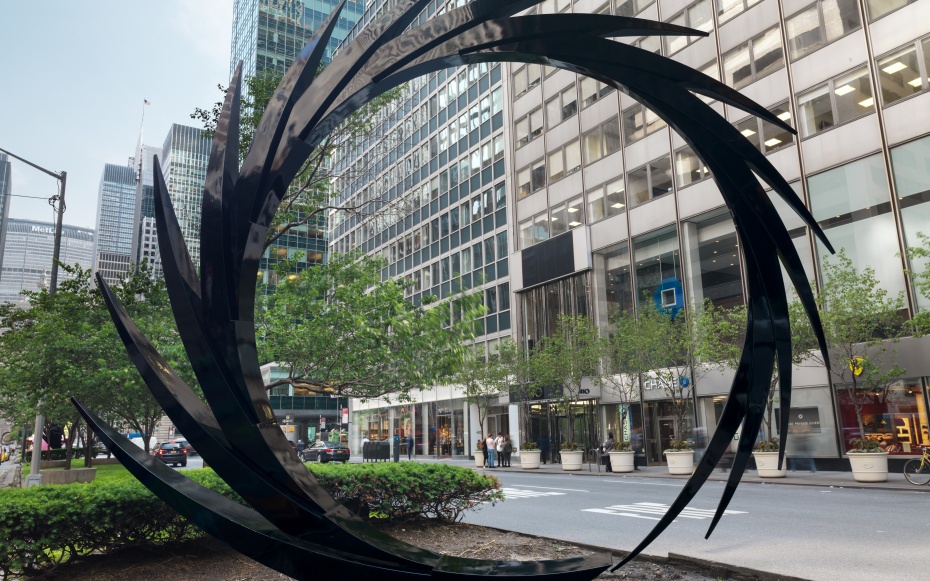
Seven monumental aluminum sculptures now sit between lanes of traffic in Manhattan’s Park Avenue. Their forms—solid, balanced, precise—echo the buildings surrounding them. The nod to their architectural context (skyscrapers between 52nd and 55th Streets) is hardly surprising. Their creator, after all, is a famous architect. What’s more, anybody familiar with Santiago Calatrava’s work would easily see how the exuberance and instant monumentalism that make his buildings sing have translated to sculpture.
This installation—supported by Marlborough Chelsea, The Fund for Park Avenue Sculpture Committee, and NYC Parks—opened early this June and will run until mid-November. Travel + Leisure spoke with the Spanish-born architect, whose most recent architectural project is the in-progress World Trade Center Transportation Hub in downtown New York.
There’s a sense of movement evident in these seven sculptures. Was this a consideration as you built these pieces?
They respond specifically to place. They are in dialogue with the cars and the people who pass, in addition to the buildings that surround them, including the Seagram Building and Lever House. They’re in conversation with the whole of Park Avenue. The way I designed this series, it starts and finishes with two circular pieces with five others in between. This, too, enhances the sense of motion.
I also meticulously chose the colors. The sculptures are silver gray, American flag red, and black. As black limos and yellow taxis pass, there’s an evident sense of rhythm. I wanted the ambience of the sculptures to fit in with the ambience of what’s going on around them.
I was also reminded of bird feathers and expansive wings. I know you’ve mentioned that you’re influenced by the natural world. Are there any specific natural elements that you’ve used as references for these pieces?
I took into account many of the colors and shapes that surround the strip of land where the works sit: the green of both the park of Park Avenue and Lever House, the vertical lines of the buildings, the dark brown of the Seagram Building, the stainless steel. I considered all these carefully. When I say “natural,” I think this can be an element of both artificial buildings and of the sculptures themselves. There’s certainly a natural rhythm in these structures, even though they’re manmade. My sculptures turn with arcs. There’s rhythm in the way they curve. I’m always learning from the natural world.
If you look at the World Trade Center station, which I’m in the process of building, you’ll see a strong affinity with these works along Park Avenue. Where it sits in front of the memorial, the building should appear as a sculpture and be seen as another great space in the city. Architecture itself is an art, and the language of architecture can be oriented toward sculpture.

You established your office in New York in 2004. Can you speak about your relationship to the city before and after that?
I was completely unknown in the city until I received an award here and won a competition. In 1993, MoMA held an exhibition of my work and asked me to create a larger sculpture for the courtyard. In 2005, the MET gave me a show to reveal a link between engineering, architecture, and art. Institutions are now really promoting architecture as art.
Now, I have seven sculptures in the heart of New York, for which I could not be more grateful.
How do you see art, architecture, and engineering in dialogue throughout New York?
Take a look at the bridges—the Brooklyn Bridge, the George Washington Bridge. These are bold landmarks in terms of engineering. Think of Grand Central. Think of Penn Station. There’s the Guggenheim, the Seagram Building, Lever House. This city is full of remarkable buildings comprised of remarkable elements, from limestone to steel. This is a great place to learn about the intersection of art, architecture, and engineering.
I’m a huge admirer of Woody Allen. He recently made a nostalgic film, Midnight in Paris, about our dream and longing to relive Paris in the 1920s and meet characters such as Hemingway, Dalí, Buñuel, and Gertrude Stein, who were all wandering around the city in that era.
New York is like that today. Open your eyes, and you’ll see the greatness of our time, the greatness of the sculptors and artists who are at work. Frank Stella, Alex Katz, Ellsworth Kelly, and Jasper Johns are all still around. You can even commission these people to do work.
New York City embodies art, architecture, and monumental engineering, especially in the buildings. There’s an orthodoxy with which they appear. New York has one of the most beautiful skylines in the world, and you can see it from inside the city, from Brooklyn, from multiple perspectives. New York is a global piece of art with the people here giving testimony to the greatness of the 21st century.
I’m proud be working in New York, and I do hope New Yorkers like my work here too.
More good reads from T+L:
• In Photos: New Orleans’s Historic Architecture
• The 20 Best Travel Movies to Watch on Netflix This Summer
• Eight Spots Proving Kansas City Belongs on Any Cool Person’s Bucket List